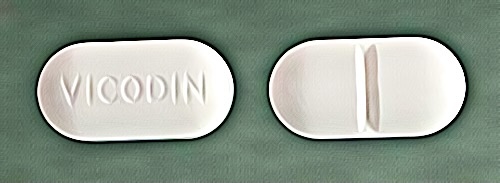Daily life can be stressful and cause headaches. Medication such as Vicodin is very accessible and should be able to relieve some of the moderate to severe pain that you are experiencing. However, some people may increase their dosage of Vicodin and take it more often than recommended. This can lead to prescription drug addiction.
In this article, you’ll learn more about Vicodin, Vicodin withdrawal, and what makes it so different from other pain-relieving pills.
What is Vicodin
Vicodin is a brand of pain relievers. It’s available as a pill or as a syrup. The main ingredient of Vicodin is hydrocodone, which is often discouraged by doctors. This common narcotic analgesic taps in the opioid receptors in your body and eases any pangs of pain.
However, aside from pain reduction, it can also give a euphoric high that helps a person feel more relaxed and content. That experience often fuels people to consume Vicodin without proper prescription or knowledge of how often you should be taking it.
How Long Does Vicodin Stay in Your System?
Whether you took hydrocodone through a capsule or liquid, it generally stays in your system for four hours. Vicodin is no exception to this as it lasts in your body for about the same time period. Doctors recommend flushing the drug out and clearing your system of it, but the duration can depend on your age, body fat, liver health, and how long you’ve been using it.
There are several ways it is traced in your body.
- Blood testing – This does not work for this specific drug variant.
- Urine testing – It is considered the most effective as it’s able to spot Vicodin four days after consumption.
- Saliva testing – It is also a convenient alternative. However, conducting saliva testing has to be very precise. It can only be detected 12 hours after consumption. When 36 hours pass after consumption, it is no longer detectable.
- Hair follicle drug test – This is considered the most reliable method in testing a person. Drug substances linger in the hair for up to three months after consumption. However, hydrocodone takes at least 10 days to show up in a hair sample.
Side Effects
The side effects of the drug can vary on how often you consume Vicodin. The general reaction to taking this pain reliever is feeling drowsy, which combats a person’s pain problems. It can also cause you to be dizzy and nauseous on some occasions. More severely, it can also cause vomiting and constipation.
The side effects tend to get more serious if you happen to take it with any alcohol. You should also be cautious with consuming it with other medications. This includes different brands of pain relievers, sleeping pills, anxiety relaxants, and antidepressants.
Mixing drugs together in your body does not bode well for your health at all, especially if you have any pre-existing health conditions or illnesses. Expect breathing problems and possible liver damage. Consult your doctor on what you should do if you consumed too much or experienced the results of a bad drug interaction.
Withdrawal Symptoms
Similar to heroin and morphine addiction, Vicodin withdrawal can take a while. There can still be a part of your body that is craving that euphoric high and calmness. It can be unpleasant to feel very agitated and desperate to retake it.
Other withdrawal symptoms include insomnia, excessive sweating, and increased muscle aches. Some may even experience cramps, diarrhea, and vomiting.
Each person can experience different periods when it comes to resisting it and going through withdrawal symptoms. Long-term users are likely to experience a more lengthy withdrawal period rather than short-term users.
It’s essential to surround yourself with people who will help you persevere and recover from use. There are rehabilitation centers and programs that can help you recover from the effects of it. Your doctor should be able to construct a plan for you to ease into withdrawal.
Is Vicodin an Opioid?

The short answer is yes; Vicodin is an opioid. Unlike opiates such as heroin and morphine, it contains hydrocodone, which has semi-synthetic properties. The brand is technically an artificial product.
These factors cause it to be categorized as an opioid. Thus, Vicodin abuse can be classified as a form of opioid addiction.
Although, we do have to consider that it isn’t solely formulated with hydrocodone. Manufacturers combine hydrocodone with acetaminophen, which is more commonly known as Tylenol. Acetaminophen helps to ease pain and bring down body temperature in case of a fever. This makes Vicodin optimal as a pain reliever from injuries or surgery.
If you look closely at the label, Vicodin’s formula usually has a constant dose of acetaminophen in its tablets. Usually, companies only change the amount of hydrocodone in the pill or liquid during mass production to change up the drug strength.
Vicodin vs Other Pain Relievers
In the US, Vicodin is easily accessible and is one of the most widely prescribed pain medications on the market. However, we do have to remember that Vicodin is a brand name for the hydrocodone and acetaminophen concoction. There are also other brands of pain relievers with a similar formula.
To name a few, Lortab, Anexsia, Zydone, and Lorcet also contain the same components as Vicodin. All these brands are relatively well-known, and all help with alleviating any pain.
- Vicodin vs Norco
Norco is very similar to Vicodin, making both comparable to each other. Both contain hydrocodone and acetaminophen. Both have the same side effects of light-headedness and incite sleepiness.
What divides the two is the proportions of the ingredients. Vicodin will often be available in 5 mg of hydrocodone and 500 mg acetaminophen. Norco has a stable 325 mg acetaminophen while the dosage of hydrocodone varies. There are variants with 5mg, 7.5mg, and 10mg.
Taking this into account, Norco has more hydrocodone and less acetaminophen than Vicodin’s formula. Albeit both are pain-relieving ingredients, the hydrocodone in Norco is likely the main contributor to that drug’s effects when a person intakes and experiences it.
- Vicodin vs Percocet
Percocet is another pain relief pill. However, it has a considerably different formula to Vicodin. Both contain acetaminophen but, while Vicodin has hydrocodone, Percocet contains oxycodone.
Oxycodone is another synthetic ingredient that makes Percocet an opioid. We should also note that oxycodone has a higher abuse liability potential compared to Vicodin’s hydrocodone. Users can use both Percocet and Vicodin interchangeably, but not at the same time.
- Vicodin vs Oxycodone
As implied above, oxycodone is an opioid and narcotic analgesic, just like Vicodin’s hydrocodone. Oxycodone can work as a pain reliever on its own as it is a potent opioid.
Both Vicodin and Oxycodone are prescribed to ease pain on a moderate and severe level. It isn’t recommended to take both as it can lead to a harmful drug interaction. In addition to that, oxycodone can’t be used to treat fever or cough like Vicodin’s hydrocodone.
Conclusion
Vicodin can be a very efficient pain reliever. However, users must only take this medication under the prescription of a medical professional. Vicodin abuse is a severe matter and should be dealt with accordingly.

